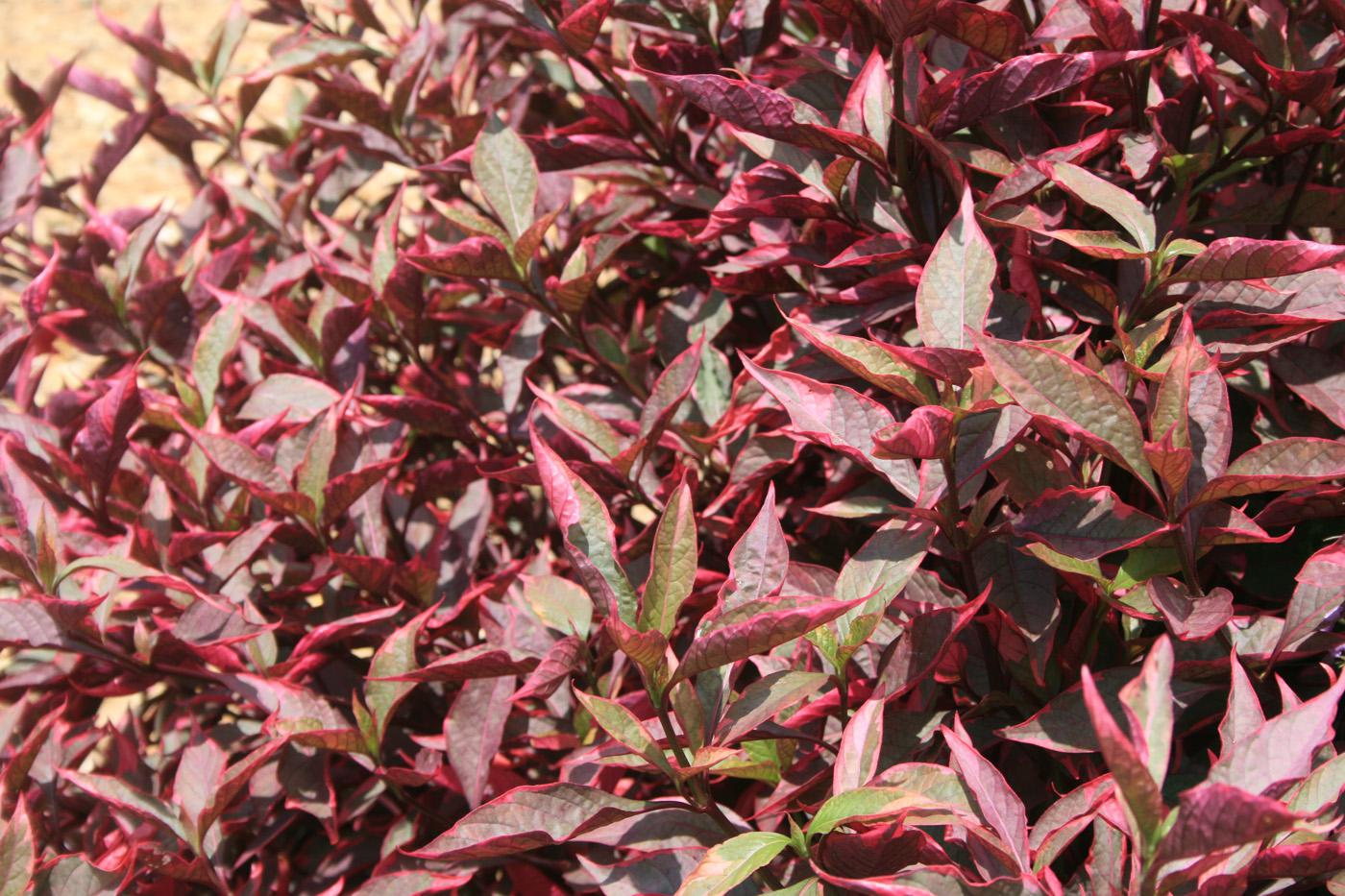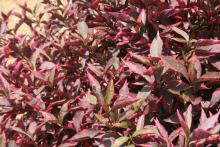Information Possibly Outdated
The information presented on this page was originally released on August 9, 2011. It may not be outdated, but please search our site for more current information. If you plan to quote or reference this information in a publication, please check with the Extension specialist or author before proceeding.
Joseph's Coats' colorful foliage shines in summer
When gardeners want to add color to the landscape, they often reach for flowering annuals and perennials. While these colorful flowers always catch the eye, their selection is usually limited at this point of the summer.
Many gardeners never consider buying colorful foliage plants for anything but shady areas, but let me encourage you to reconsider their usefulness. These plants provide color, and you can still find good selections available in the local garden center that you can plant in the heat of summer.
Joseph's Coat is a beautiful landscape foliage plant that is really coming into its own as the summer continues to heat up. Its colorful foliage lasts from initial planting until the first frost and, in some cases, beyond.
Joseph’s Coat has attractive foliage that is showy without relying on flowers, so you don’t have to worry about a limited bloom period as you would with some flowering perennials. These attributes are helping to fuel an increased interest in using colorful foliage plants in the landscape.
I like the fact that Joseph’s Coat can be used in lieu of flowering annual bedding plants, and a few of the taller selections are fit for duty in the shrub border. Joseph’s Coat also can provide a great filler accent in a combination container.
Known botanically as Alternanthera, Joseph’s Coat came from Central and South America and is related to the popular landscape annuals celosia and gomphrena. It has several species, which range from low-growing spreaders to tall, upright forms. Foliage colors range from lime and chartreuse to bronzy reds and pinks.
A nice, low-growing selection is Little Ruby. This plant has an upright and mounding growth habit that is only 15 inches tall, and it has gorgeous, dark burgundy foliage tinged with green. Another great one to try is Brazilian Red Hot, which has wavy textured leaves that are variegated with purplish centers and fluorescent fuchsia margins.
The landscape performance of Joseph’s Coat was recognized in 2005 when Purple Knight Alternanthera was selected as a Mississippi Medallion winner. The foliage of this plant is a rich and vibrant dark purple through the summer until frost. Purple Knight grows vigorously and can reach up to 36 inches tall. When pinched back, it grows more prostrate and spreading.
Any flowers the Joseph’s Coat produces are insignificant and can be removed, but this is not necessary. Light pruning does promote lateral growth and maintains the plant’s dense shape.
Joseph’s Coat is heat-tolerant and thrives in full sun. The colors actually intensify as the temperatures increase, which means these are beautiful in our Mississippi summers. Joseph’s Coat will tolerate growing in shady conditions, but the colors will be subdued.
Add 3 to 4 inches of good, organic matter to the soil and plant in well-drained, fertile soil. At planting, add a slow-release fertilizer at about two pounds per 100 square feet of landscape bed to keep the plants fed through the summer.
Joseph’s Coat is a good choice for dry summer conditions. As with any drought-tolerant plant, supplemental irrigation during prolonged periods of drought will help keep the plants going strong.








